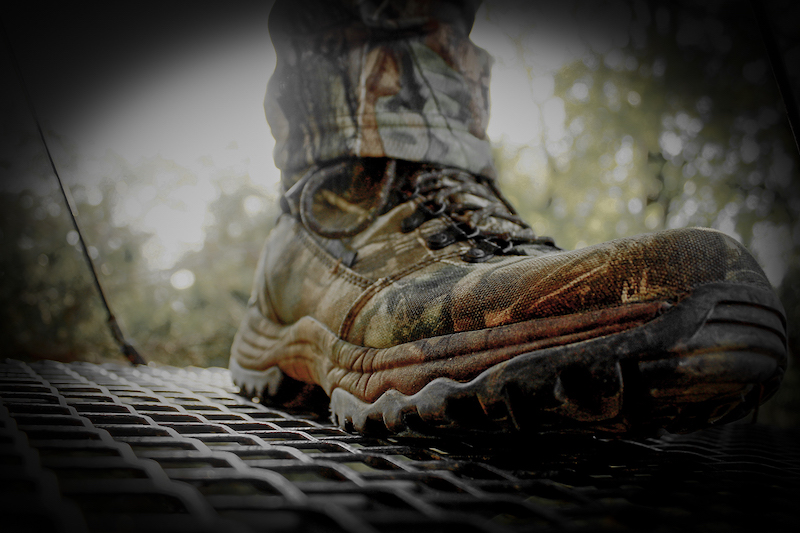Few memorable hunts occur on 60-degree days. Many come from persevering through snow, freezing rain and plummeting temperatures. Uncomfortable conditions push your limits, and make you feel like you’re really hunting. When the hunt is over, you reward your grit and determination with a warm seat and hot coffee.
Cold-weather bowhunting also offer many advantages. For instance, animals must seek food to maintain their energy levels, and food sources are more limited than earlier in fall. That can make your quarry easier to pattern and ambush. In addition, fewer hunters are out, which puts less pressure on game. And if there’s snow, tracking and patterning is easier. Winter is also a great time to hunt predators, which keeps you in the woods after deer season.
But to take advantage of late-season hunting opportunities, you’ll need good clothing that’s properly layered. Only then will you hunt in comfort.

Layer in a way that you can take individual pieces of clothing off and on. Photo Credit: QDMA
To hunt in cold temperatures, you need a layering system that helps you retain heat without sweating. The basic principle is to remove layers when active and wear them when stationary. A cold-weather layering system starts with a moisture-wicking layer next to the skin; followed by a light insulating layer, like a wool shirt; and then insulating layers like a heavy jacket. The outer layer must shield you from the wind.
Insulating layers come in two basic options: down and synthetic fibers. Down from ducks and geese is lighter and warmer than synthetic insulation. It’s also more expensive, a bit noisier, and worthless when wet. Synthetic insulation is quiet, heavier than down, and retains its warmth when wet. If you hunt where it’s dry and subfreezing, choose down. If you hunt where it’s humid, or the temperatures hover above freezing, synthetics work best.
Merino wool is fantastic for mid-layers, and it also works as the base layer next to the skin. Merino wool breathes and retains heat exceptionally well. It’s also quiet, and has natural antimicrobial properties that reduce human odor. Just make sure you read and follow its washing instructions.
Cotton is great for many casual applications, but it’s horrible for cold-weather hunting. Cotton doesn’t wick moisture and it doesn’t dry quickly, which can be dangerous in cold weather. Moisture draws heat from your body, much like water cooling you on hot days. Sweat can even lower your core temperature. Jeans and most T-shirts are made of cotton. Leave them home in favor of wool or synthetics.

Keep your hands toasty, but functional. Photo credit: Big Game Logic
A cold bow can feel like a chunk of ice. Bowhunters need gloves that provide warmth while keeping your fingers mobile. “Shooting gloves” are great options. A model called “glittens” are mittens with a slit that let you quickly expose your fingers. They’re great for traditional bowhunters because they provide fingers direct contact to the bowstring.
You can also wear a thin liner glove under mittens or a heavier glove. A muff or handwarmer is another way to keep your dexterity without sacrificing warmth. They look like an insulated fanny pack, and you might have seen your favorite quarterback use them.
Insulated hats, of course, are mandatory. They protect your head and should cover your ears. Wool beanies are good options when you’re active or if the weather is mild. For extreme cold, trapper-style hats can be a difference-maker. Also consider a balaclava to keep your neck warm and cover your face. Just make sure it doesn’t interfere with your bowstring.

A good pair of hunting boots are durable and leave enough room to prevent blisters. Photo Credit: ATA
Insulated rubber or waterproof leather boots paired with thick wool socks create a great system for cold-weather hunting. When selecting boots, make sure they fit properly, which means keeping a little wiggle room between your foot and the boot. This creates space to trap warm air, which is crucial for toasty toes. When buying boots, try them on with the socks you plan to wear to ensure you get the right fit.
Also, try loosening your boot laces when reaching your stand. This helps your circulation, which keeps your feet warm.
Practice shooting while wearing your full cold-weather setup to ensure your bowstring doesn’t catch on any of your clothes, and that you have full range of motion. If your string catches on your jacket or sleeve, use an armguard and a chest protector to compress your layers. If you have clearance problems, vests are a good way to add insulation without making your arms bulky.
Clothing isn’t your only concern, however. You might not feel thirsty, but be sure to drink plenty of water. Staying hydrated is a major challenge in cold weather.
Also know hypothermia’s symptoms. These include shivering, confusion, slurred speech, shallow breathing, weak pulse, low energy and lack of coordination. If you experience any of these symptoms, get warm and seek help.
Don’t let snow and cold temperatures end your bow season. Winter offers too many great bowhunting opportunities to stay indoors. With proper gear and clothing, cold-weather bowhunts offer many enjoyable opportunities for lifelong memories.